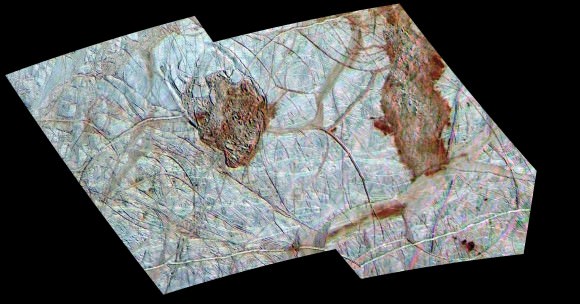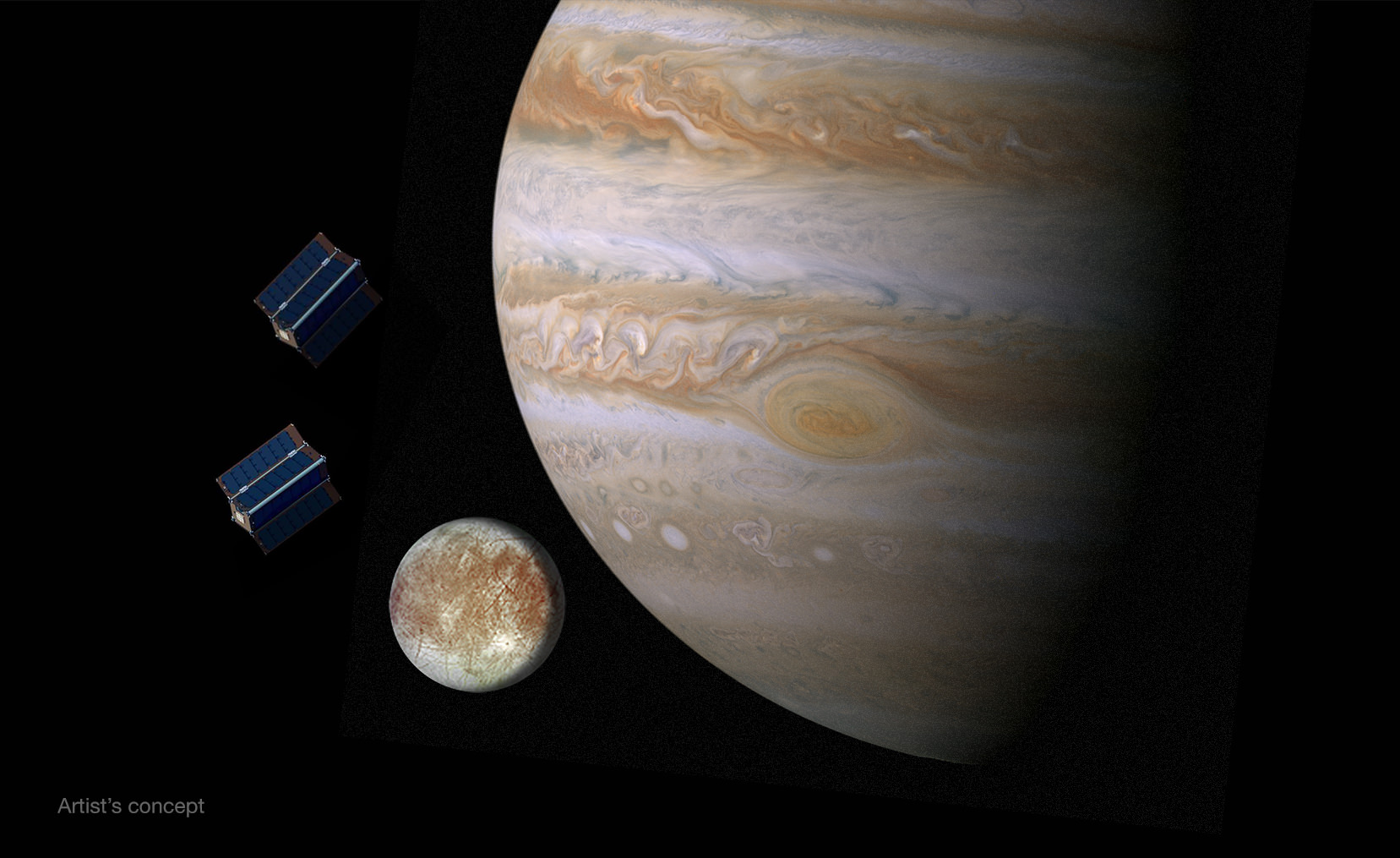When you’ve got a $2 billion mission concept to head to Europa, it’s likely a good idea to pack as much science on this mission as possible. That’s the thinking that NASA had as it invited 10 universities to send their ideas for CubeSats — tiny satellites — that would accompany the Europa Clipper mission to the Jupiter system.
Europa Clipper is only on the drawing board right now and not fully funded, and should not be confused with the lower-cost $1 billion Europa mission that NASA proposed earlier this year (also not fully funded). But however NASA gets there, the agency is hoping to learn if the moon could be a good spot for life.
Each university is being awarded up to $25,000 to develop their ideas further, and they will have until next summer to work on them. Investigations include searching the surface for future landing sites, or examining Europan properties such as gravity, its atmosphere, magnetic fields or radiation.

“Using CubeSats for planetary exploration is just now becoming possible, so we want to explore how a future mission to Europa might take advantage of them,” said Barry Goldstein, pre-project manager for the Europa Clipper mission concept, in a press release.
If Europa Clipper flies, it would do at least 45 flybys at altitudes between 16 miles and 1,700 miles (25 kilometers and 2,700 kilometers.) Part of its expense comes from the long distance, and also from all the radiation shielding the spacecraft would need as it orbits immense Jupiter.
Science instruments are still being figured out, but some ideas include radar (to look under Europa’s crust), an infrared spectrometer (to see what is on the ice), a camera to image the surface and a spectrometer to look at the moon’s thin atmosphere.
While there are no Europa missions officially booked now, NASA does have an active spacecraft called Juno that will arrive at Jupiter in July 2016.

